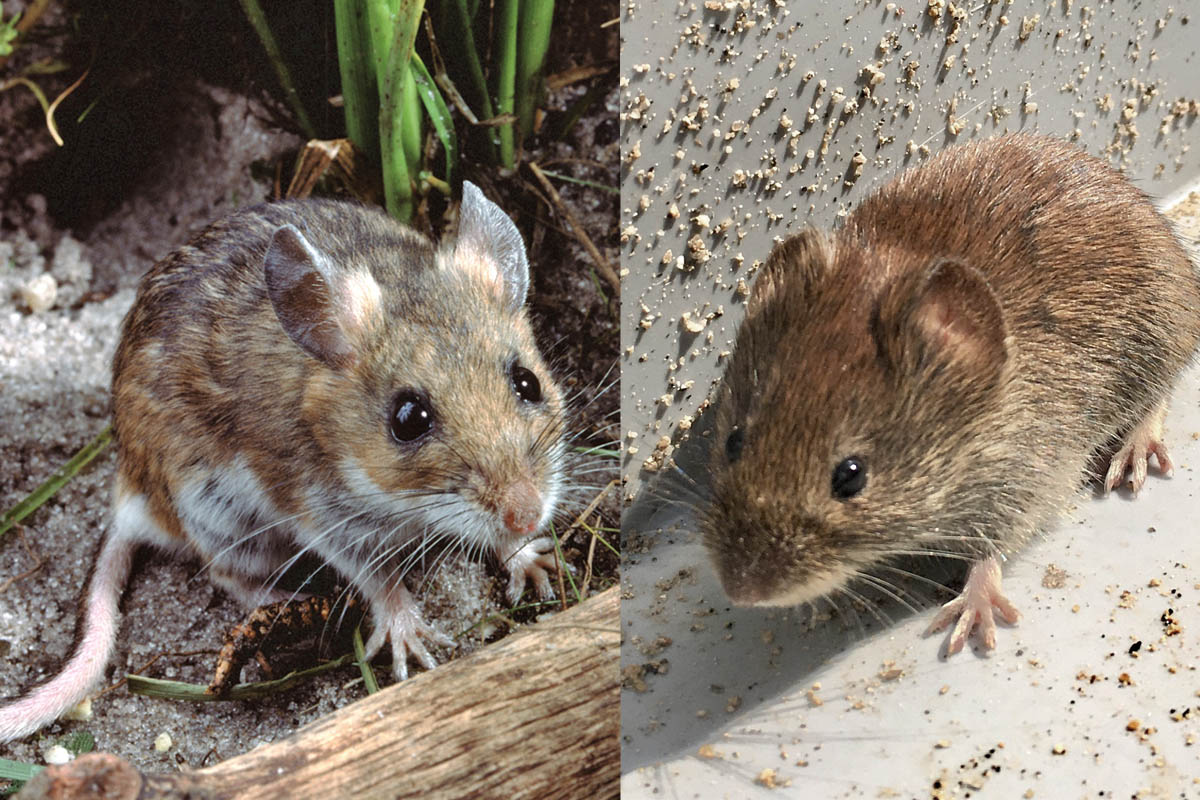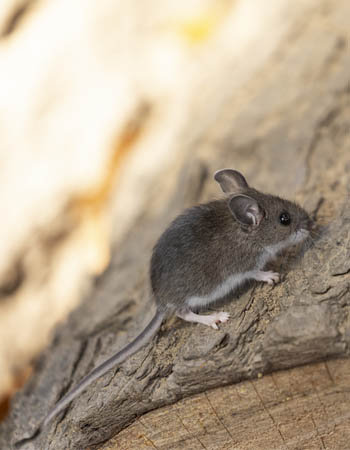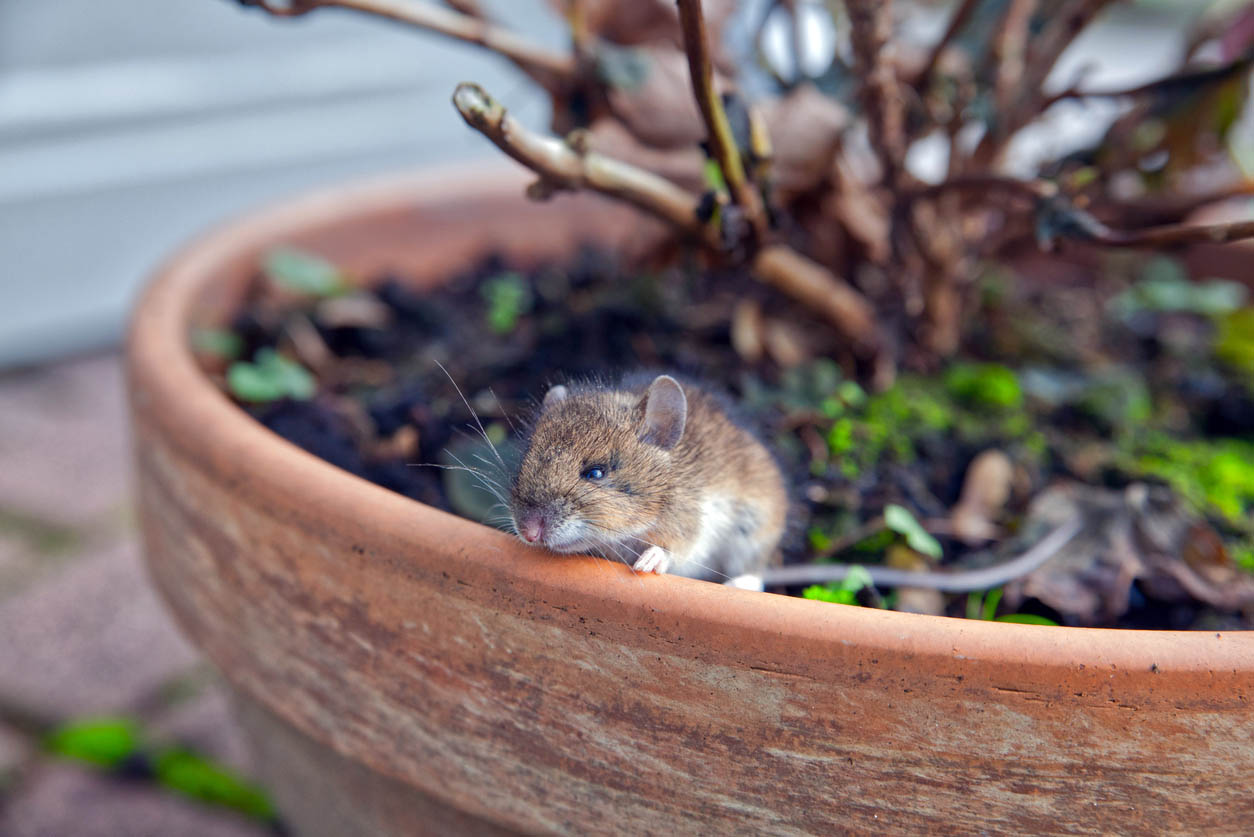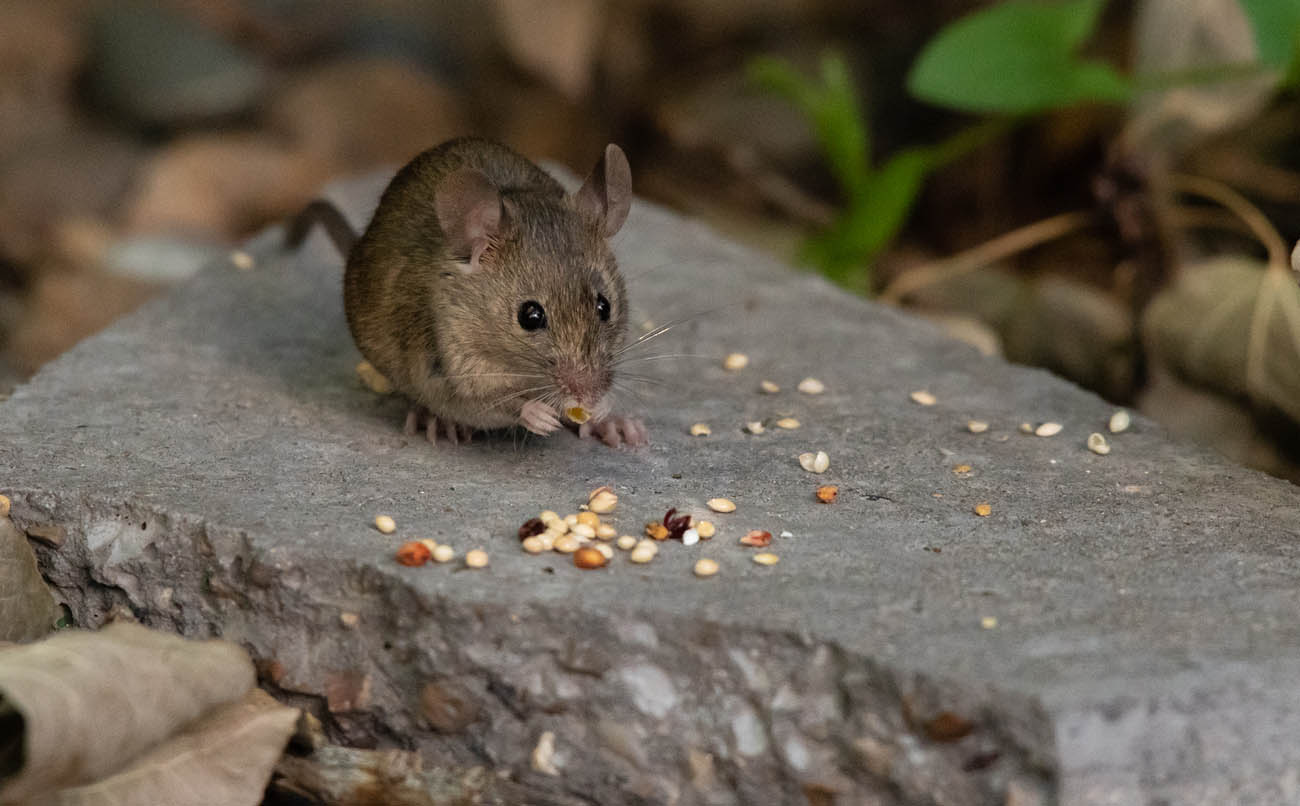

We may earn revenue from the products available on this page and participate in affiliate programs. Learn More ›
House mice or deer mice can quickly infest a home, particularly during fall or winter when they’re looking for a warm place to stay. Since they often carry diseases and contaminate food, mice are unwelcome house guests that can pose a health hazard—aside from the annoying scratching and squeaking in the walls. There are fewer similarities between house mice and deer mice than you might think. The distinctions between a house mouse and a deer mouse (sometimes called a field mouse) can be identified by their differing sizes, nesting habits, colors of fur, and especially the hairy or hairless tail. Most notably, deer mice are less common in urban areas than house mice. Check out these seven tips to identify a house mouse versus a deer mouse. Regardless of what you’ve spotted, a pest control professional can ensure that you don’t see one again.
1. A house mouse has a brown or gray coat, while a deer mouse has brown fur and a white belly or legs.

If you catch a good glimpse of these tiny creatures, you’ll be able to identify which mouse is in the house. A house mouse has fur all over its body and is usually brown or gray, without any other color patches. A black house mouse is less common but not out of the question.
Deer mice are two-toned. Their backs and heads are a darker brown or gray, but their underbellies, legs, and feet are either tan or white. Deer mice also have much larger eyes than house mice.
2. Deer mice have hairless tails, while house mice have hairy tails.
Another feature of the house mouse is a hairy tail that is the same color as its fur. It’s not furry and bushy, but it will have noticeably more coat than bare skin. The tail on a house mouse is usually the same length as its body.
A deer mouse has a shorter, hairless tail that is usually two-toned just like its body: dark brown or gray on the top and white or tan on the bottom.
3. House mice can be found in urban areas, while deer mice live strictly in meadows, fields, and parks.
If your house is in an urban area, the pesky rodent in your walls is much more likely to be a house mouse than a deer mouse. These mice are opportunistic feeders who seek out accessible food sources and warm shelters. While house mice can survive in natural environments like fields or forests, a nearby house is a much more appealing prospect.
Deer mice tend to resist living in houses occupied by humans, but they can be found in parks or forests near urban or suburban areas. These mice are comfortable toughing it out in warm nests during the winter, but an isolated cabin with infrequent human visitors might be irresistible.
4. Deer mice can cause hantavirus pulmonary syndrome, while house mice cannot.
The biggest concern with a deer mouse infestation is their ability to spread hantavirus pulmonary syndrome, which can be fatal for humans. Humans can catch hantavirus by inhaling contaminated feces or urine from infected deer mice. Identifying whether you have a house mouse or deer mouse problem is crucial for preventing a dangerous health problem. It’s helpful that deer mice tend not to live in urban homes, but any proximity to natural areas should bring an added measure of caution when inspecting for a rodent infestation.
House mice also pose their own threat to the humans they share a space with. While they’re unlikely to transmit hantavirus pulmonary syndrome, they can bring bugs such as fleas and lice into homes. House mice can also carry salmonella and other bacteria that can not only be detrimental to humans’ health but can also be damaging to a home’s insulation or drywall.
A reputable pest control service will treat a deer mouse infestation slightly differently than it would a house mouse infestation. While the preferred indoor nesting sites are similar, exterminators will also address and treat areas such as dark, hidden areas in garages and sheds, attics if there are trees touching the roof and boxes and furniture located in those attics, and corner sill plates in basements and crawlspaces if the rodent in your home is a deer mouse.

5. A house mouse is not longer than 5 inches, but a deer mouse can be 7 inches long.
The size of a house mouse can vary, but the average is 2.5 to 3.2 inches long. It never grows longer than 5 inches, including the tail. Their small size allows them to fit through the smallest of cracks and holes in foundations or roofs.
A deer mouse is a little larger than a house mouse, averaging between 3 to 4 inches long but no more than 7 inches long, including the tail.
6. House mice are excellent jumpers, whereas deer mice are better climbers.
The size and nimbleness of a house mouse makes it adept at getting into small spaces. These rodents are capable of jumping a foot high as well as climbing and swimming. This allows them to get over small obstacles easily, then climb textured surfaces to get to their nest.
A deer mouse is even more adept at climbing than a house mouse. A deer mouse can identify the nearest branch to a house, scale it, and drop onto the roof in mere moments. Vines, trellises, and even drainpipes are like a natural highway for deer mice.

7. Deer mice hoard their food, but this behavior is less common in house mice.
Since house mice are more opportunistic and live in environments where food is plentiful, they tend to eat as they go. They don’t carry food back to their nest to save for a later time. In some ways, this could make them easier to find since they spend more time near food sources than deer mice.
On the other hand, deer mice are prone to stocking up on any crumbs or seeds they find. They build their nests in hidden areas like under logs or roots, inside firewood piles, or in corners of sheds. Their nests are bigger than house mice nests to accommodate their storage needs.
Mice, regardless of the variety, are probably not the friends you want moving into your home. If you spot a mouse, there are likely more nearby. Contact a local pest control professional to ensure your home stays mouse-free.
